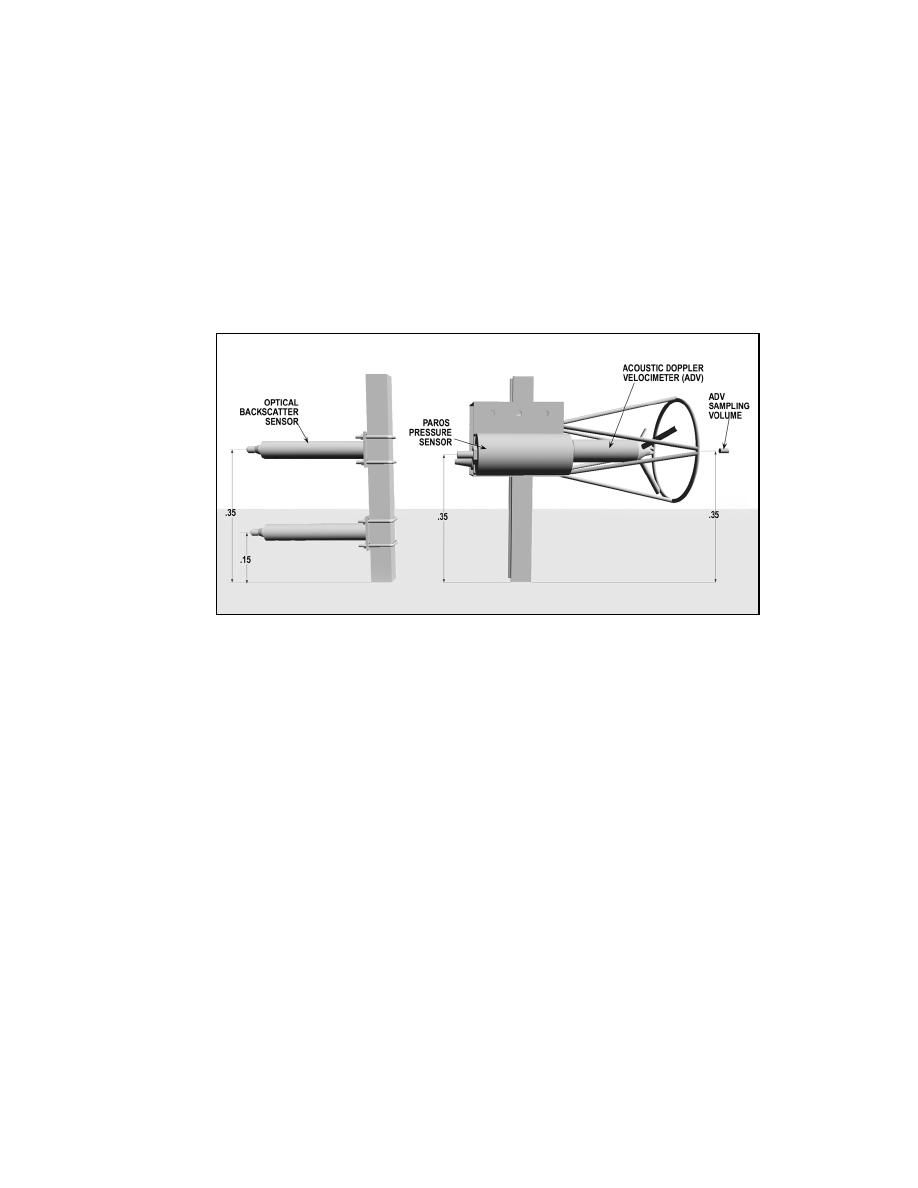
surface by the ADVO and suspended sediment measurements by the sta OBS 3
enable the calculation of suspended sediment flux. The combined measurements
of the ADVO and pressure sensor enable the calculation of directional wave
information. The sampling method for all instruments is shown in Table D2.
Each SIDSEP frame is constructed of marine grade aluminum and has six
25-pound lead weights attached to the inside of the frame. The total frame
weight, with instruments, is approximately 200 pounds when submerged. The
SIDSEP are approximately 7 ft long, 2 ft wide, and 1 ft high (Figure D3).
Figure D2. SIDSEP instrument configuration and nominal dimensions
All equipment were tested, assembled, and transported from Seattle; only
minor assembly was required on the beach at Ocean Shores. Figure D2
illustrates the position of instruments comprising the SIDSEP. After all
instruments are attached to the SIDSEP, a function check of all equipment was
conducted. The ADVO sensor, which houses the Hydra compass, was aligned
horizontally. The compass and tilt sensors were positioned within the sensor
head to provide correct heading, pitch, and roll data.
High-Energy Sub-Tidal Tripods (HESTT). The HESTT were designed to
be deployed and retrieved by helicopter from the high-energy wave environment
at the seaward end of the north jetty. Each of the tripods is constructed of marine
grade aluminum and has eighteen 50-pound lead weights attached to the frame.
The total frame weight, with instruments, is approximately 1,200 pounds when
submerged. Wooden pallets were placed on the base of the tripod legs and
attached with lag bolts (Figure D4); the pallets prevent the tripods from sinking
in to the sea bed and were designed to break free from the legs during tripod
recovery.
Instrument packages on the HESTT consisted of an ADP configured to
operate at 1,500 kHz for recording nondirectional wave data, water level, and
D5
Appendix D
Field Data Collection



 Previous Page
Previous Page
